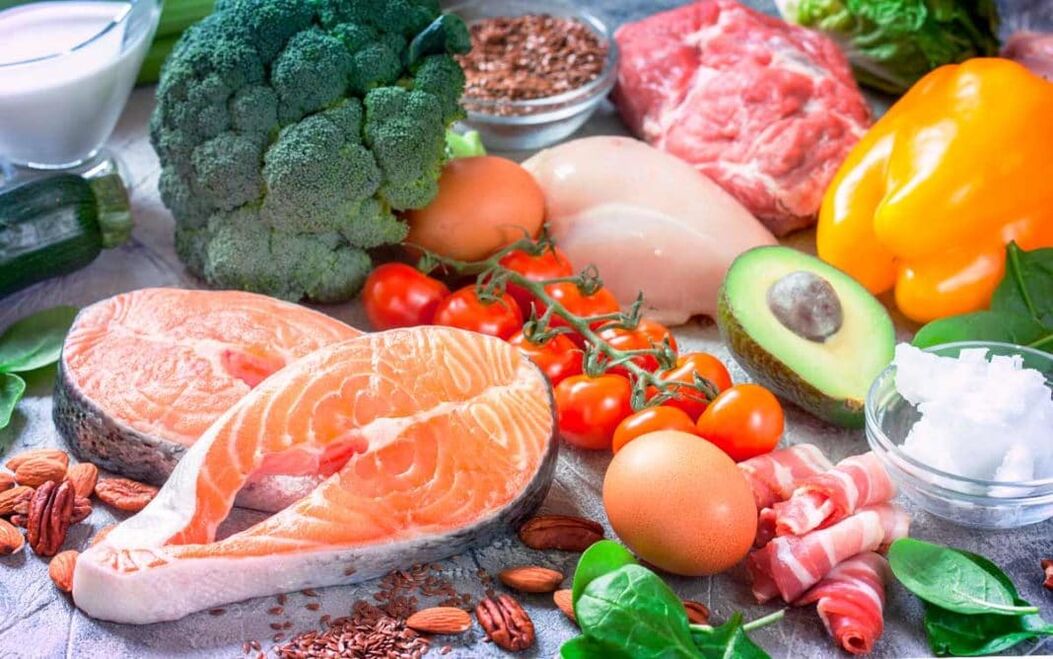
A number of studies have shown that a ketogenic diet can help improve the health of diseases such as epilepsy, cancer, Alzheimer's disease and multiple sclerosis. This diet also helps to reduce weight effectively.
In this article, you will find menus, product lists, and detailed guidelines for those starting a ketogenic diet. Read everything you need to know here.
What is a ketogenic diet?
Ketogenic diet, Also known as the keto diet, is similar to the famous Atkins diet-the diet is high in fat, low in carbohydrates and medium in protein.
When carbohydrates in the diet replace carbohydrates, the body is forced to use fat as an energy source.
How does the ketogenic diet work?
In order to maintain the body's tone, nutrition and brain function, food needs energy. The main and fast source of carbohydrates is carbohydrates, which are processed into glucose and saturate the body with energy. If there are not enough carbohydrates in the diet to nourish the brain, the liver will be forced to convert fat deposits into ketones and fatty acids. This diet is very effective in burning fat for energy. The human body undergoes a metabolic change called ketosis, in which ketone bodies are transported to the brain and used as energy instead of glucose.
The ketogenic diet also has a positive effect on diabetic patients, because a low-carbohydrate diet can lower blood sugar and insulin levels.
Output:The ketogenic diet is a high-fat but low-carbohydrate diet. The body is forced to use fat to extract energy from carbohydrates instead of ketones, while the blood sugar and insulin levels are reduced.
Previously, children with epilepsy needed to take a ketogenic diet because the increase in ketone bodies in the blood (ketosis) can reduce the incidence of seizures.
Ketogenic diet can treat certain diseases
The mechanism and therapeutic effects of the keto diet have been studied and applied to a variety of diseases:
- Alzheimer's disease;
- Autism
- Multiple sclerosis;
- Parkinson's disease;
- Amyotrophic lateral sclerosis;
- Some forms of cancer;
- Metabolic syndrome and type 2 diabetes.
Ketogenic dietIt is also widely used by sports athletes who require extreme endurance. In most cases, this is triathlon, cycling, marathon, when the body burns fat for a long time, it will effectively burn fat as an energy source to retain glycogen stores in the liver.
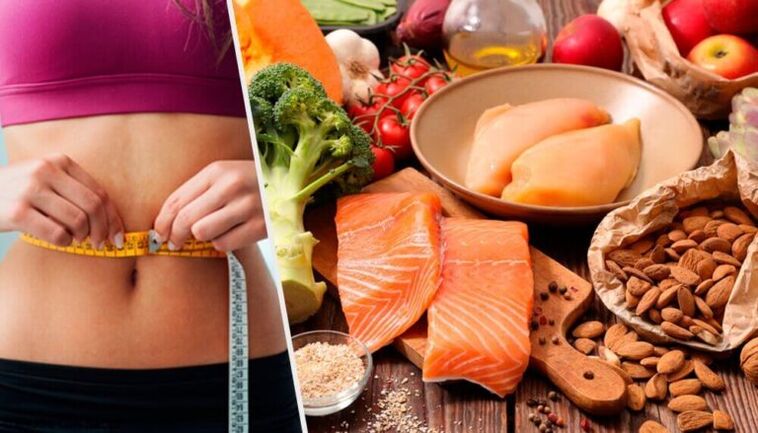
Ketogenic diet for weight loss
The ketogenic diet or fat diet is widely known in Poland, which is not surprising because the author is Jan Kwasniewski, a Polish nutritionist. Not only can this diet be successfully used for various diseases, but with the help of a ketogenic diet, you can quickly lose 2. 5-3 kg of weight per week.
Weight loss is due to the lack of carbohydrate foods in the required diet: limit all simple carbohydrates, flour, sugar and even potatoes. However, during the keto diet, high-fat foods are allowed: cheese, lard, dairy products, vegetable oils, nuts, seeds, meat, high-fat fish, which come from vegetables, you should prefer fresh or frozen low-carbohydrate andGreen leafy vegetables.
Types of ketogenic diet
Consider the four most common ketogenic diet options:
- Standard diet (SKD):A classic low-carbohydrate diet with high-fat and medium-protein foods in the diet. These ratios are: fat accounts for about 75%, protein accounts for about 20%, and carbohydrates account for about 5%.
- Cycling ketogenic diet (CKD):During this diet, you can include a high-carbohydrate diet, but eat up to 2 days in 7 days. You eat a standard keto diet five days a week and a high-carbohydrate diet two days a week.
- Directed Diet (CDD):This ketogenic diet only allows carbohydrates to be added to the diet during, before or after training.
- High protein ketogenic diet:Similar to a standard ketogenic diet, but with an increased protein percentage. It means up to 60% fat, 35% protein and 5% carbohydrates.
However, despite more research on standard diets and high-protein ketogenic diets, athletes, athletes, and bodybuilders are more likely to use periodic and targeted diet choices.
In this article, we will study the classic version of the standard ketogenic diet, although other options have general principles.
Output:Nowadays, there are many options for the ketogenic diet, of which the most popular, recommended and most researched is the standard ketogenic diet.
How can the ketogenic diet help you lose weight?
The keto diet effectively helps reduce excess weight and is used as a preventive agent for certain diseases. The advantage of the diet is that weight loss does not make calorie counting boring, but is only achieved by eliminating carbohydrates, which has advantages compared to low-fat diets.
A study that divided participants into two groups proved this point. The first group adhered to a ketogenic diet and the second group adopted a low-calorie, low-fat diet. As a result, the participants in the first group lost 2. 2 times their weightThan the second group
Output:A ketogenic diet has several advantages over a low-fat diet, allowing you to lose weight without feeling hungry. The decrease in blood sugar and insulin levels and the increase in the number of ketones also play an important role.
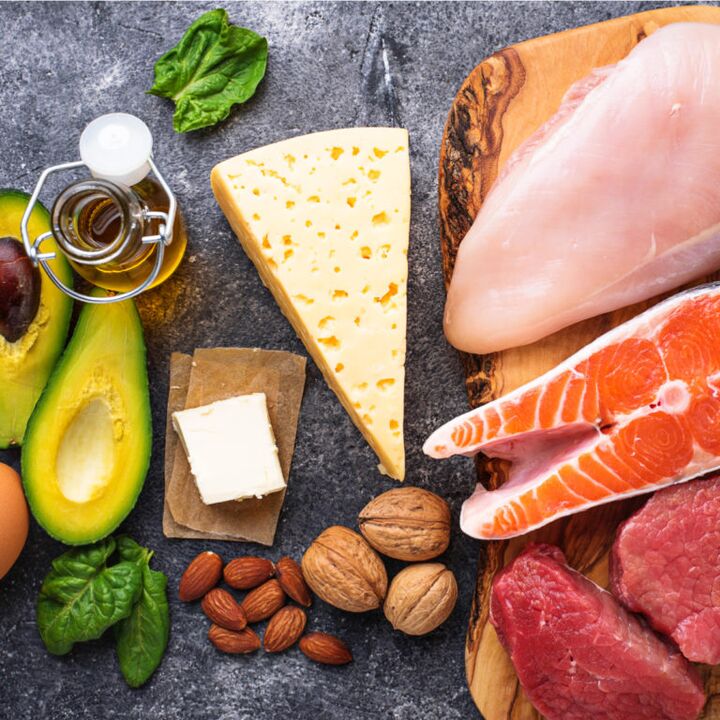
Ketogenic diet for diabetes
Diabetes is an endocrine disease characterized by insufficient insulin production and metabolic disorders related to glucose uptake.
Eating a ketogenic diet can help burn fat and lower sugar levels, which is related to patients with type 2 diabetes, prediabetes and metabolic syndrome.
A study found that a ketogenic diet can increase insulin sensitivity by 75%. As a result of a study of 21 patients with type 2 diabetes, it was found that the overall health of 7 subjects had improved significantly and they could stop taking diabetes medications. For patients with type 2 diabetes, this weight loss is a big advantage.
Another study showed that participants on the ketogenic diet lost 10 kg in weight, which is very effective. This is different from the control group where participants in the control group ate a high-carbohydrate diet and only lost 7 kg in weight. In addition, 90% of people in the ketogenic group can withdraw from medication, while 60% in the high-carbohydrate group can withdraw from medication.
Output:The ketogenic diet can safely lose weight and significantly improve the health of patients with type 2 diabetes.
Diseases for which the ketogenic diet is considered beneficial
This eating habit has previously been used to treat children with epilepsy.
The therapeutic effects of the ketogenic diet are beneficial to a variety of neurological diseases:
- cancer.Diet is part of metabolic therapy for certain types of cancer, and the most promising is that it can be used for glioblastoma.
- Alzheimer's disease.Research in 2018 showed that the use of a keto diet can have a positive effect, because ketone bodies can correct energy deficiency, which leads to slower disease progression.
- epilepsy.Research results show that ketone bodies in the blood can reduce the incidence of epileptic seizures in children. In 90% of difficult epilepsy cases, the condition of 6-12 months in the diet has been improved.
- Parkinson's disease.It was found that the ketogenic diet has neuroprotective and anti-inflammatory properties and therefore has potential therapeutic effects in the disease.
- Multiple sclerosis.It was found that the ketogenic diet has neuroprotective and anti-inflammatory properties and can also improve the course of this disease.
- Type II diabetes and metabolic syndrome.It improves insulin resistance, blood lipid status, and reduces the risk of heart disease.
- Type 1 diabetesImprove blood sugar control and reduce the risk of hypoglycemia.
- Autism.This diet can effectively reduce the metabolism in the brain. Due to its neuroprotective effect, the ketogenic diet has a good therapeutic potential for this disease.
It should be remembered that, so far, the quantity and quality of certain studies have not been sufficient to recommend to all patients without exception.
Foods prohibited during the keto diet
It is forbidden to eat foods containing a lot of carbohydrates. Need to completely eliminate or minimize the list of this food with a ketogenic diet:
- High-sugar foods:Soda, juice, smoothies, cakes, ice cream, pastries, rolls, candies, potato chips, jams, marshmallows, etc.
- Grains or starch:Wheat products, bread, rice, pasta, cereals, baked goods, etc.
- fruit:All fruits, except for a few berries such as strawberries.
- Beans: Peas, beans, lentils, chickpeas.
- Root vegetables and tubers: Potatoes, sweet potatoes, carrots, parsnips, etc.
- Low-fat and nutritious food:They have gone through many stages of processing and usually contain large amounts of carbohydrates.
- Condiments and seasonings:Some contain sugar and unhealthy fats, mayonnaise, ketchup, etc.
- Harmful fats:Reduce processed vegetable oils, processed trans fats, and hydrogenated fats, including margarine.
- alcohol:Because of their high carbohydrate content, many alcoholic beverages can help you get rid of ketosis.
- Sugar-free diet food:They are usually filled with other chemical fillers that affect the ketone content. These foods also usually require a lot of processing.
Output:Avoid refined and high-carbohydrate foods made from white flour, sugar, beans, rice, potatoes, candy, most fruits and berries.
Foods you can eat on a ketogenic diet
If you decide to try a ketogenic diet, then you should know what you can eat. A diet that follows this diet should include the following foods:
- a fish: Catfish, cod, flounder, halibut, mackerel, mackerel, salmon, sea bass, trout, tuna and mackerel. Wild salmon, tuna, trout and shellfish are especially beneficial because they can help provide a balanced Omega-3 diet.
- seafood:Shellfish, oysters, lobsters, crabs, scallops, mussels and squid.
- Whole eggs:If possible, it is necessary to eat eggs from free-range hens. You can cook them in different ways, including frying and boiling.
- beef:For beef, steaks, roasts and stews, please make sure the tenderloin is thicker.
- pork:For pork tenderloin, pork chops, tenderloin and ham, beware of sugar and try to stick to lean meat.
- bird:Chicken, goose, turkey, duck, quail, pheasant and other games.
- Viscera: Heart, liver, kidney and tongue, stomach, some of the best sources of vitamins and nutrients.
- Other types of meatVeal, goat, lamb, rabbit and other wild meats can stick to denser meat.
- Bacon and sausage:Read the composition carefully to exclude the presence of sugar and other additives.
- cheese:Unprocessed cheeses (cheddar cheese, goat cheese, cream, blue cheese and mozzarella cheese).
- Nuts and seeds:Almonds, walnuts, hazelnuts, pine nuts, flax and pumpkin seeds, chia seeds.
- Useful oils:First of all, natural olive oil and coconut oil, avocado oil.
- Avocado:Whole avocados or freshly cooked guacamole.
- Low-carb vegetables:All non-starchy and green vegetables, as well as tomatoes, onions, and peppers.
- seasoning:Salt, pepper and various herbs.
- Butter and cream:Eat more natural herbal foods.
Output:Most of the diet consists of meat, fish, eggs, oil, nuts, avocado, coconut and a lot of vegetables with the lowest carbohydrate content. Whole foods with one ingredient are ideal.
What do you eat on the ketogenic diet?
If you are hungry, the following ketogenic snacks should be prioritized:
- High-fat fish fillets or boiled pork fillets.
- Few seeds or nuts.
- Butter cheese or only cheese.
- 1-2 slices of boiled chicken or quail eggs.
- Bitter chocolate with 80-90% cocoa content.
- Low-carb milkshake with almond milk, cocoa and nut butter.
- High-fat yogurt is mixed with nut butter and cocoa powder.
- Strawberries and cream.
- Celery and salsa and guacamole.
Output:A big snack in the ketogenic diet is fish, meat, cheese, butter, boiled eggs, nuts, and dark chocolate.
If you are on a ketogenic diet, how should you eat out?
In any cafe or restaurant, you can easily find many dishes that correspond to the ketogenic diet on the menu. Almost every cafe and restaurant offers meat, fish snacks and dishes, so low-carb vegetables can be ordered at any time. If you are on a ketogenic diet, kebabs, kebabs, meat, and grilled fish are great.
Egg dishes are also good-order yourself omelette or eggs with bacon and avocado. Another option is cheese, vegetable platter, just make sure the carbohydrate content in the vegetables is low.
In Mexican restaurants, enjoy a variety of meats and cheeses, guacamole, salsa or sour cream. For dessert, ask for a cheese mixture or berry double cream.
Output:When dining out, order meat, fish, cheese, avocado, eggs, bacon and low-starch vegetables.
The possible side effects of the ketogenic diet and how to minimize the ketogenic diet?
When any change occurs, it involves climate, nutrition, environment and other issues. A person has his own sensitivity and adaptation time. The ketogenic diet is no exception, and it may have adverse effects on the body. This is manifested as the so-calledKeto flu, It will pass in a few days.
Symptoms "Keto fluIncluding intense hunger, distraction, lack of physical strength and energy, sleep disturbance, nausea, headache, abdominal discomfort, and decreased mental and physical functions.
In order to minimize side effects, please consume enough water, get enough sleep, avoid overuse, add potassium-rich foods (green leafy vegetables, avocados) to your diet, and proper amount of salt helps maintain healthy electrolyte balance in the body. Reduce negative performance"Keto fluEating enough healthy fats will help gradually reduce the carbohydrates in the diet, making it easier for people to switch to ketones and reduce symptoms.Keto flu. . .
important:The ketogenic diet can also change the body's water and mineral balance, so it may be necessary to add additional salt to food or mineral supplements.
When supplementing nutrition, minerals, especially sodium, potassium, and magnesium, should be added to the ketogenic diet to reduce side effects. Application method and dosage will help you choose an expert
When switching to a ketogenic diet, especially at the beginning, you need to be full and avoid calorie restriction, because keto foods can help you get rid of excess weight without counting and restricting calories.
Output:If you follow certain rules, "keto flu" and other dietary side effects will be minimized, especially you should pay attention to the proper way of drinking, and the food contains salt and mineral supplements.
Supplements to the ketogenic diet
No additional supplements are needed during dieting, but some of them may be beneficial.
- Minerals:Salt and minerals are essential for normal balance during the journey.
- caffeine:The caffeine in coffee can help replenish energy deficiencies caused by adapting to a new diet, as well as energy deficiencies related to weight loss.
- Exogenous Ketone: After consultation with the doctor, the level of ketones can be increased more.
- Creatine:A substance of natural origin will help increase the body's endurance, and combined with physical exercise, will help to reduce weight more effectively.
- serum:A healthy source of protein, use half of whey protein in milkshakes or yogurt to increase your total protein intake.
Output:Some supplements are beneficial to the ketogenic diet, pay attention to exogenous ketones, whey and minerals.
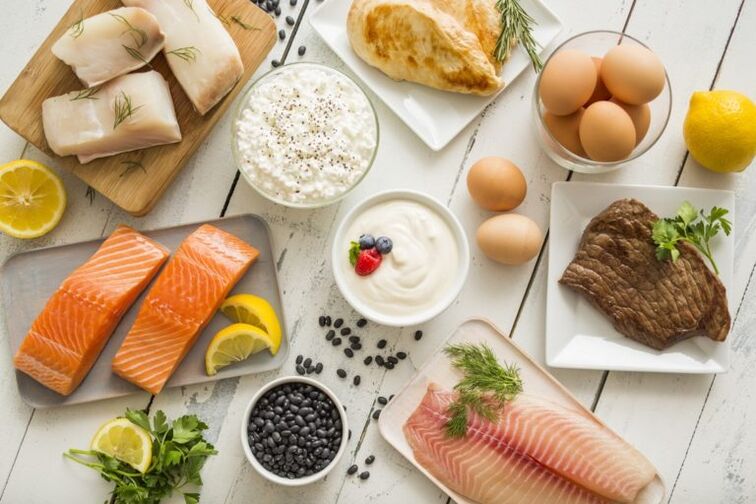
Frequently asked questions for people choosing a ketogenic diet
Here are the answers to some of the most common questions about the ketogenic diet.
Can you start eating carbohydrates again?
Yes, the main condition is to exclude them at the beginning of the ketogenic diet. 2-3 months after starting a diet, you will be able to consume carbohydrates on special occasions or holidays, and then immediately resume your diet.
Will the muscles disappear?
Any diet may lead to the risk of losing muscle mass. A large amount of protein and high levels of ketone bodies will help them maintain their balance, especially when you are engaged in sports that require high endurance or weightlifting.
Can you build muscle through a ketogenic diet?
It is possible, but the result is slower than a diet with a moderate carbohydrate content in the diet.
Do I need to "supply" carbohydrates before the ketogenic diet?
No need. However, it is best to have a high-calorie diet for a few days before starting to eat.
How much protein should you eat every day?
Too much protein will increase insulin levels and reduce the number of ketone bodies. It is recommended to take in an appropriate amount of protein, which accounts for about 35% of the total calorie intake.
What if you often feel tired?
This means that you have not yet reached a state of elevated blood ketone levels. It is necessary to reduce the amount of carbohydrates, monitor drinking conditions, and add salt and other minerals to the diet.
Why does urine smell like fruit?
It doesn't matter, this is the function of the ketone by-product.
I feel bad breath, what should I do?
A common side effect of the ketogenic diet is increased water consumption. Regular consumption of chewing gum can also help.
Is ketosis harmful to health?
The main thing is not to confuse ketosis with ketoacidosis. The state of ketosis is natural. This is a variation of the normal situation. It is not dangerous to health. The uncontrolled appearance of a ketoacidosis diet is his real danger.
What to do with digestive problems and diarrhea?
Another side effect of the ketogenic diet should disappear within a month. If the problem persists, include vegetables rich in fiber and magnesium.
Are there contraindications to the ketogenic diet and is not suitable for everyone?
- The ketogenic diet is effective and suitable for overweight people with diabetes, metabolic syndrome and anyone who wants to improve their metabolism.
- It is not suitable for athletes who wish to increase muscle mass or weight.
- The ketogenic diet can only burn fat for a long time.
- The ketogenic diet is great. It is a way of eating that can safely and quickly lose weight while improving health.
Ketogenic diet menu for about 7 days
As a help, we provide you with a week’s ready-made ketogenic menu:
1 day ketogenic meal
- breakfast:Scrambled eggs with bacon and cherry tomatoes.
- dinner:Chicken salad with olive oil, herbs and feta.
- snack:Cheese bread;
- dinner:Grilled salmon with buttered asparagus.
2-day ketogenic food
- breakfast: Eggs, tomatoes, goat cheese omelet and basil.
- dinner:Almond milk, coconut oil, cocoa stevia cocktail.
- snack:nut.
- dinner:Turkey meatballs, cheddar cheese and cooked vegetables.
3-day ketogenic nutrition day
- breakfast:Ketogenic milkshake, few nuts.
- dinner:Shrimp and mussel salad with herbs, avocado and olive oil.
- snack:Avocado.
- dinner:Pork chops with parmesan cheese, salad and broccoli.
4 days of ketogenic nutrition days
- breakfast:Cheese and 2 tablespoons of honey.
- dinner:Beans with beef and cherry tomatoes.
- snack:Avocado.
- dinner:Tuna salad, beans and eggs, bread.
5-day ketogenic nutrition day
- breakfast:Tofu casserole with berries.
- dinner:30 grams of buckwheat, roasted chicken legs.
- snack: Avocado.
- dinner:Radish, cherry and cucumber salad, grilled salmon with herbs.
6-day ketogenic nutrition day
- breakfast: Omelet with cheese and grapefruit.
- dinner:Trout, cheese, cucumber and cherry salad.
- snack: A mixture of nuts.
- dinner:Vegetable ratatouille and pork kebab.
Ketogenic nutrition day 7 days
- breakfast:Scrambled eggs with green beans.
- dinner:Stewed squid beans.
- snack: Avocado.
- dinner:Salad of cherry tomatoes, Chinese cabbage, capping pepper and chili, roast beef.
This is a ketogenic menu for about a week. You should also remember to drink at least 2-2. 5 liters of purified water every day, which can be flavored with mint or lemon. Allowed beverages: tea, coffee without sugar or chicory.
The keto diet: before and after results, photos
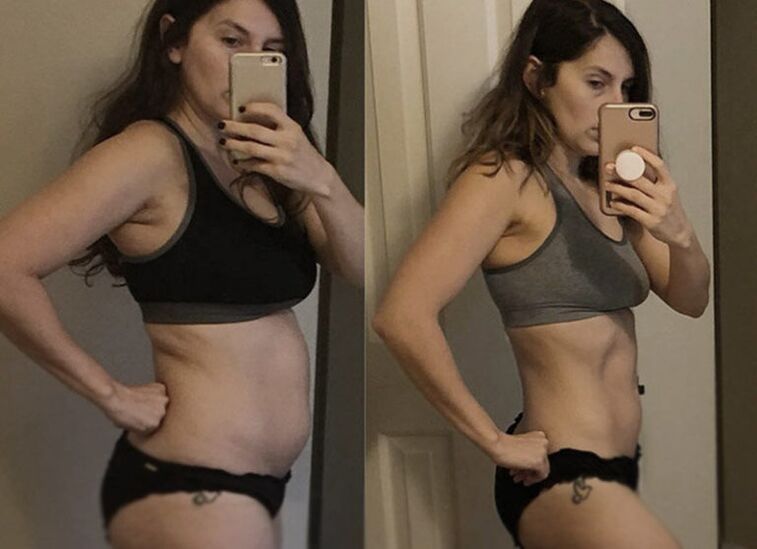
attention!If you decide to start following the ketogenic diet, you need to consult an expert!

































